Harewood Plains is a fabulous and sensitive wildflower ecosystem in Nanaimo, British Columbia. The late spring flower bloom occurs in early May and rolls into June. Water seeps down a gentle, mostly east facing slope that is covered by a shallow layer of soil over non-permeable rock. As a result, conditions are ideal for wildflowers and the open meadows are awash in colour at this time of year. The shallow soil also makes environmental damage more likely and signs of disturbance by ATV riders are long lasting.
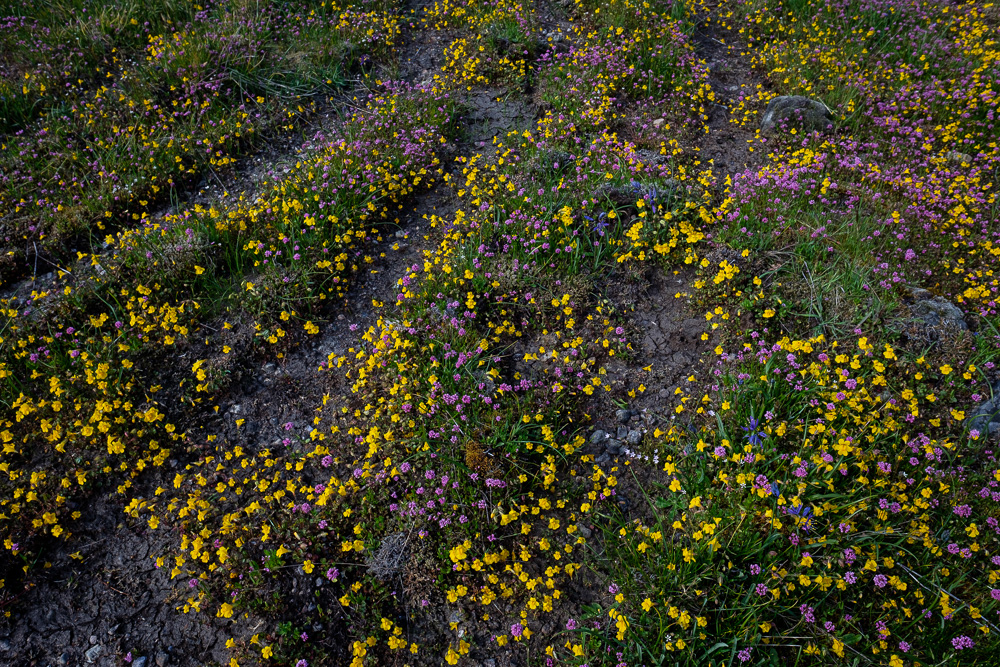
Wildflowers in Bloom
A number of different wildflowers bloom at Harewood Plains. At this time of year, sea blush (Plectritis congesta) covers the meadows in a wash of pink colour. In addition, yellow monkeyflower (Mimulus guttatus) grows in profusion in the wet areas. Its other common name of seep monkeyflower hints at why it is so common at Harewood Plains. The waterlogged soil is ideal habitat for this wildflower. It mixes with the sea blush, providing a bright yellow contrast against the pink blanket of wildflowers.
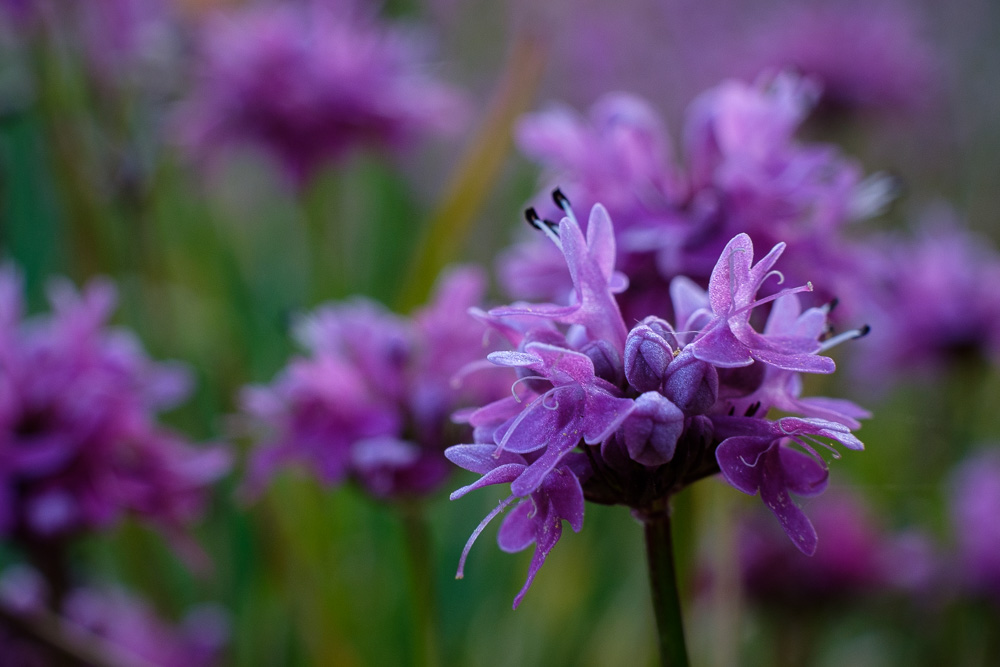
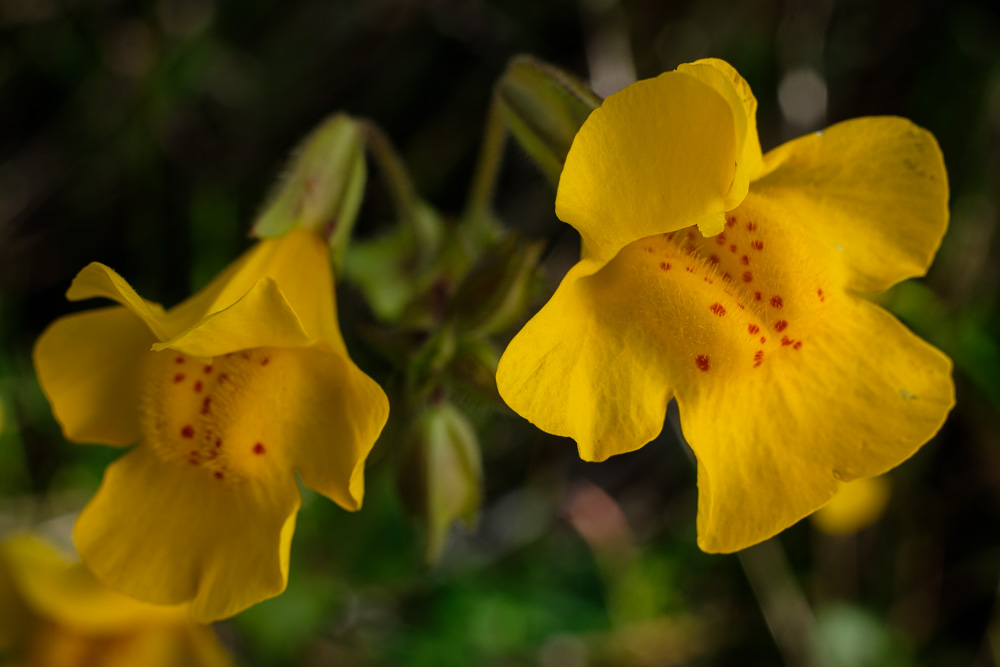
Mixed in with the yellows and pinks of monkeyflower and sea blush are pockets of blue common camas (Camassia quamash). This beautiful flower is a delight to view and photograph and more common on the edges of the open parts of the meadow. In early May, common camas was blooming well.
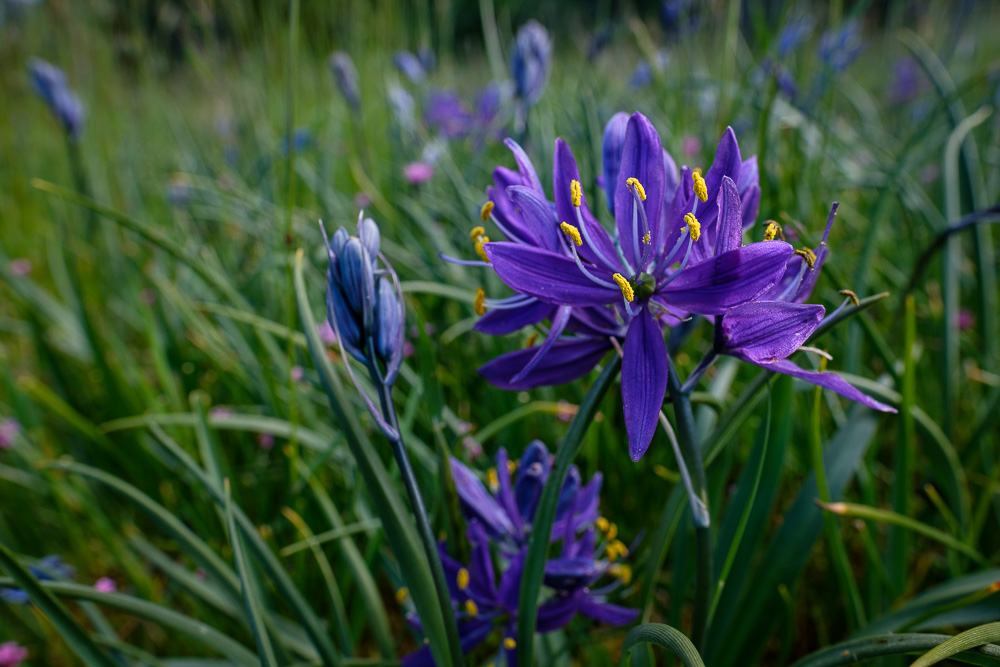
Wildflowers Along the Edges
While the main wildflower display in the open areas of Harewood Plains is spectacular, it is worth following the tracks that lead closer to the forest edges. In a less exposed section of the meadows two different types of shooting star were in bloom. Superficially, the flower structure of both wildflowers looks the same but a closer look at the stamen tubes provides a quick way to identify the two different species. Looking at the basal leaves is a good additional field mark that helps with identification.
Few-flowered shootingstar (Dodecatheon pulchellum) was the more common shootingstar at Harewood Plains. The key identifying feature of this beautiful flower is the yellow stamen tube. In addition, the leaves of few-flowered shootingstar are oblong lance to spoon shaped. The other common name of this shootingstar is, appropriately enough, the pretty shootingstar.
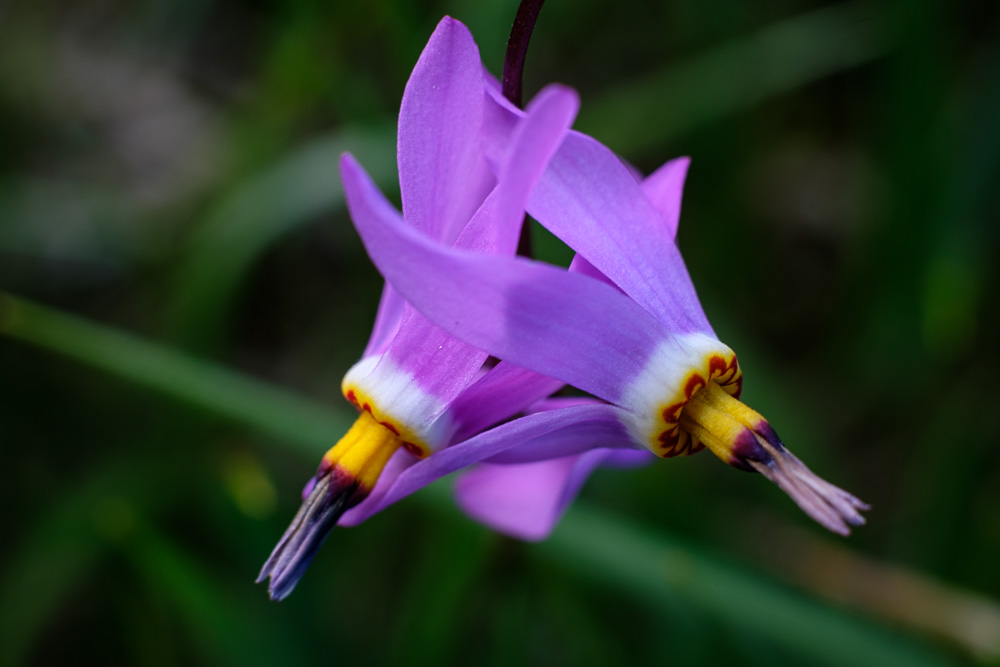
It is possible to find broad-leaved shootingstar (Dodecatheon hendersonii) at Harewood Plains. At first glance it looks similar to few-flowered shootingstar but the stamen tube is dark reddish in colour. The leaves are broad and somewhat leathery in appearance and feel. It was a little harder to find this species of shootingstar, but the effort was rewarding!
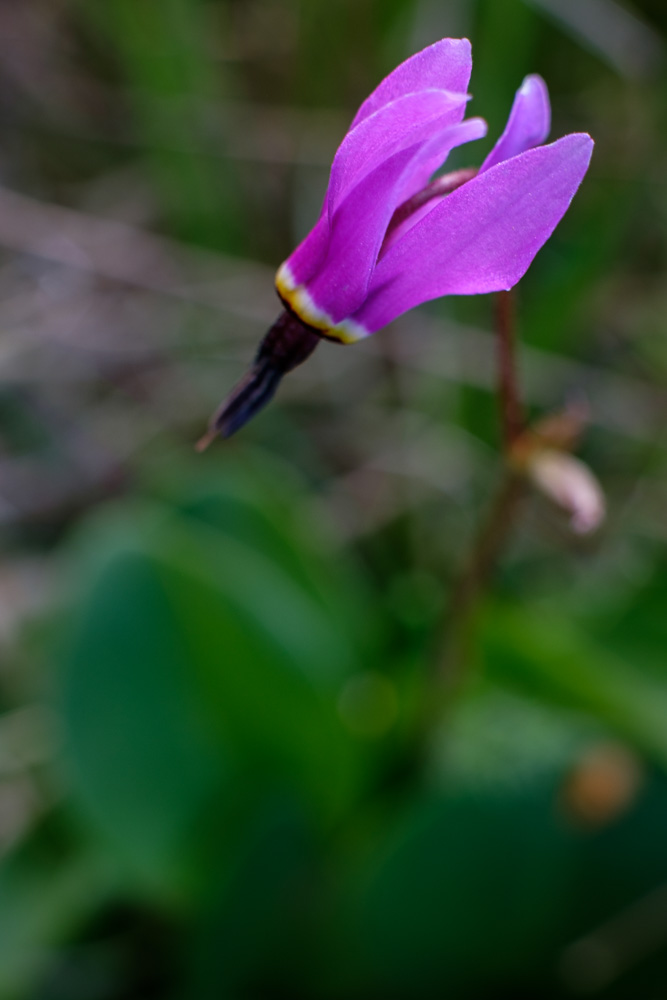
Harewood Plains is definitely worth the visit in May and June to take advantage of the changing peak wildflower blooms. These five flowers are the most common and easy to notice wildflowers in the meadows. However, there are many other interesting plants to discover. In less exposed areas it is also possible to find very rare plants like the bog birds-foot trefoil (Lotus pinnatus) which typically blooms into June. Other small flowers grow in micro pockets with specific conditions in the meadows, tucked away in wet or shaded areas. Plants associated with Garry oak ecosystems are common. Make sure to stay on the trails and tracks when visiting in order to protect this sensitive ecosystem for others to enjoy.